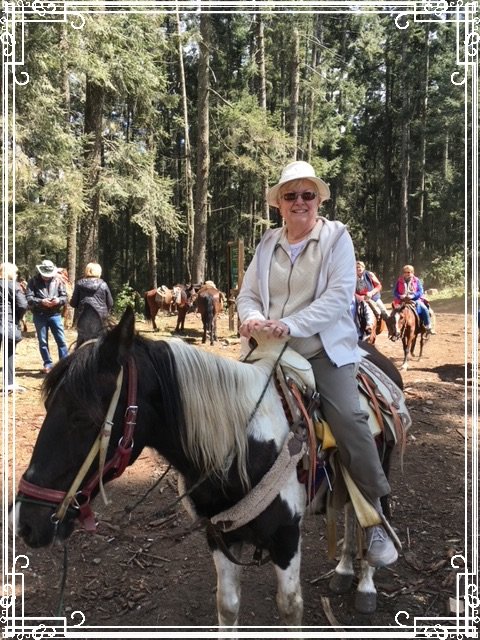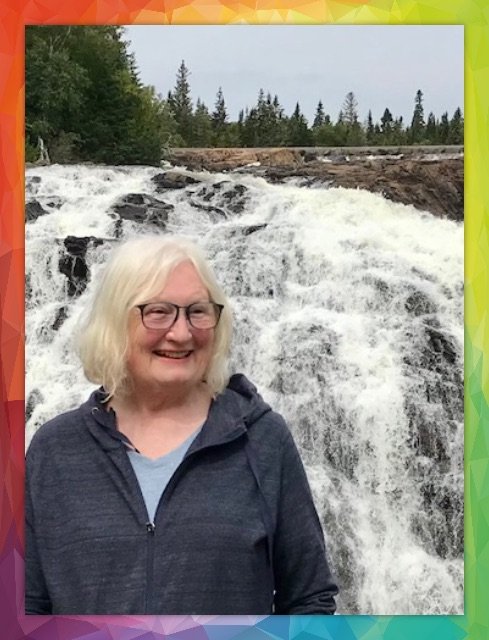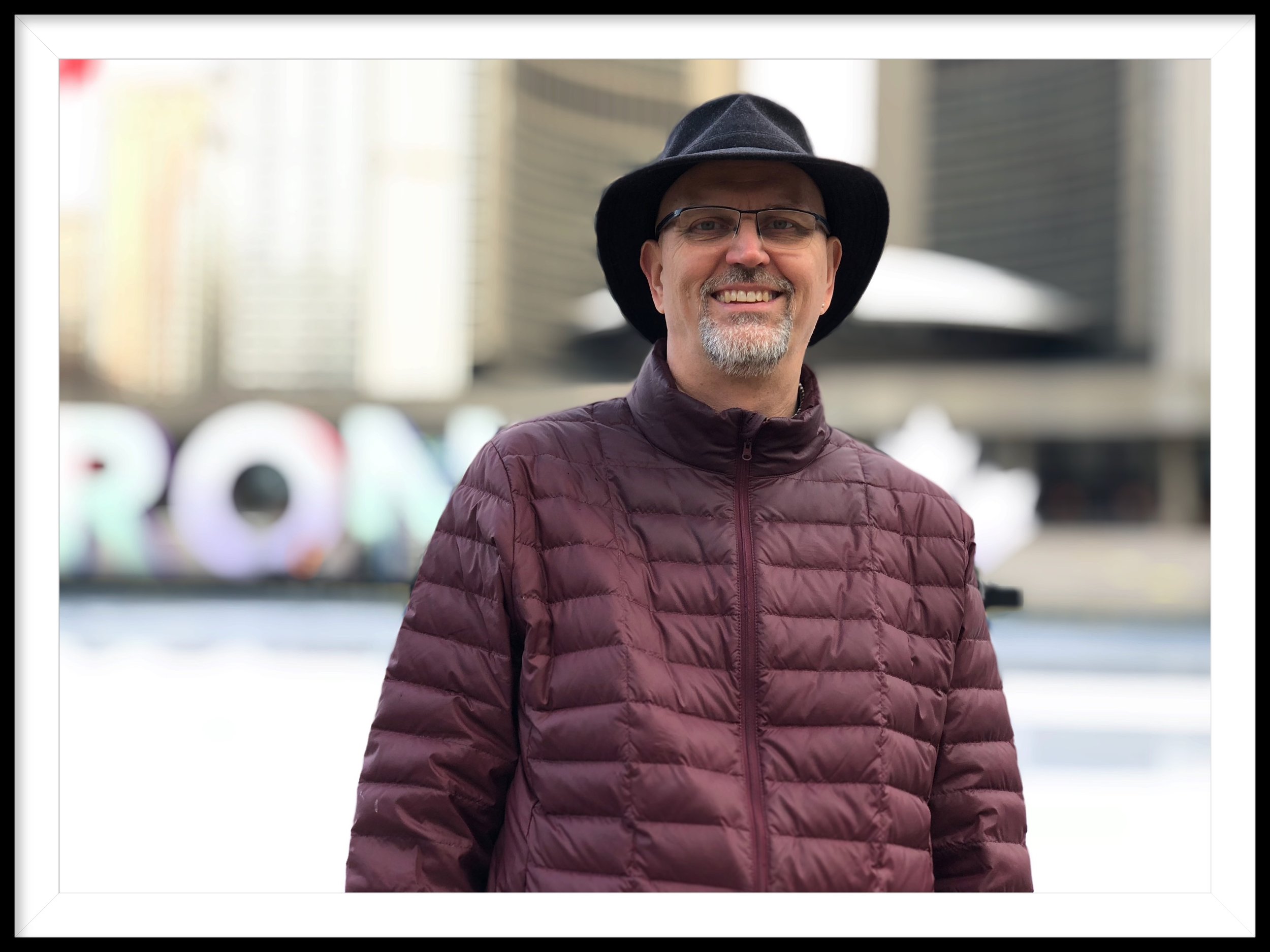Visiting butterflies
My partner Heather and I have travelled quite a bit in Mexico, but, ever since we read Barbara Kingsolver’s book, Flight Behavior, visiting the area in the mountains of central Mexico where the continent’s Monarch butterflies migrate in the winter had been on our bucket list!
So, when we were able to get married in our downtown Toronto Anglican church in December of 2016, we took the opportunity to go as our “honeymoon”. Instead of people giving us gifts, which we most certainly didn’t need (having been together at that point for well over 20 years), we gave people the opportunity to contribute funds to allow us to make this epic journey!
We arrived in early February of 2017 and stayed at a wonderful B&B in the indigenous community of Macheros, at Cerro Pelon, one of the access points of the UN Monarch Biosphere Reserve. JM Butterfly B&B is a unique place, which combines eco-tourism with education, land protection and hospitality. It was built and continues to be run by a wonderful couple: Joel, an indigenous man, born and brought up in Macheros, and his wife Ellen, who is a cultural anthropologist from South Carolina! This unique business respects the local community, and brings culturally significant work in hospitality and land protection to it. If you ever think of making this journey yourself, I strongly recommend you stay here. They look after all the details for exploring the reserve, as well as providing a community of fellow travellers from literally all over the world!
The butterflies are “in residence” from roughly the end of November to the middle of March. To get to the remote areas of the reserve where the butterflies are located is an adventure in itself. If you are an experienced hiker, you can get there on foot, but you need to be fully aware you are climbing a mountain! Most people do the trip up (and down) the mountain by horseback – at least the gringo sits on the horse, while a competent local person leads the horse up and down the steep and rocky paths. Your main job is to stay on the horse! The scenery is breathtaking.
Eventually you arrive at the area where the butterflies are that day – they do move around, but the local people always know where to find them. You are awestruck by a quiet forest cathedral with literally millions of butterflies, hanging in huge clumps from the trees as far as you can see. At first, the clumps are quite brownish grey, but clearly visible, when the butterflies are clinging together. When the sun comes out and shines on them, the clumps break up into a mass of orange wings – you can hear the hum of wings as they fly everywhere around you! You can walk around, exploring the site from different perspectives, or just sit quietly and take it all in. You are there for several hours, so there is lots of time to absorb it at your own pace. Click here to see video.
We were there for nearly a week, so we took two journeys to the butterflies, in different areas of the Biosphere Reserve. Ellen also offers local tours to visit the village artisans, the bakery, the fish farm and so on. The only restaurant in town is next door to the B&B and is run by Joel’s mother, Rosa, and her staff, who took very good care of us and serve wonderful local food.
What a wonderful adventure!
Red Cabbage Slaw with Apples, Cranberries and Pecans
-Judy Amsbury
½ small red cabbage, finely shredded
1 Granny Smith apple, skin on, sliced thinly in ½ inch pieces
1 medium carrot, peeled and grated
¼ cup red onion, very thinly sliced
¼ cup dried cranberries
¼ cup chopped pecans
Hot Coleslaw Dressing
¼ cup white vinegar
2 Tbsp oil
3/8 cup (48 g) sugar
½ tsp salt
½ Tbsp celery seed
Bring to a boil and stir until sugar melted. Pour over slaw while still hot. Toss well and refrigerate until cold. Toss again before serving.
Serves 4-5
Equity Member Interview – Gayl Hutchison
Gayl is an introvert who has learned to be social. Not surprising, really, as cohousing tends to attract introverts. She doesn’t like attention drawn to herself even in her 70’s. She is comfortable sharing one-to-one, though, so if there’s anything you want to know, you’ll have to call her!
Gayl was born in Toronto and lived there up to age 14. Her parents split up when she was 7 and she gives her mother a lot of credit bringing up her 2 brothers and herself. Her mother worked in a grocery store on shifts and cleaned houses while she went to secretarial school. That got her a good job at an engineering firm until she remarried and the family moved to Burlington, where Gayl finished high school.
She spent part of all her summers in rural Nova Scotia with aunts, uncles, cousins and grandmother. It was a huge part of her life and she loves it there. Gayl always intended to move out east, but life had other plans. Her step-father had apple orchards in Waterdown, and she spent a good part of the summers working there – picking, and driving once she got her license. She had to drive the pickers from Galt and also drive around the farm picking up bins. It was a good education for her on farming because she saw her step-father invest money into the orchard in spring and summer only to be hailed out or thwarted by other weather. So she has a respect for farming she might not otherwise have had.
While in Burlington, she got involved with a group who were establishing the Bruce Peninsula Hiking Trail and this helped form her love of hiking. She also worked at a grocery store and babysat about 40 kids all told – she was rarely at home.
After high school, Gayl moved back to Toronto and got a job at the Royal Bank. She did volunteer work and eventually got a job through it – she created a program to support developmentally challenged women age 18-76 to hold jobs and live independently. This was the start of the era of deinstitutionalization. She met her husband here; he was volunteering. He ran a camp for developmentally challenged kids. They both always loved working with and helping people.
Gayl was always attracted to grass roots organizations. She met someone who opened up his home to people coming off of drugs. The organization grew – LSD was popular at the time – and she became part of the board with a bunch of other people. That was really out of her comfort zone, but it was very interesting and a great experience. She was with them until they got really well established.
Her husband became a probation officer and they moved to Whitby, where her son was born in 1974. Her husband changed careers and went to teacher’s college. That brought them to Peterborough, where he taught elementary school. In 1977 her twin daughters were born. They were very ill and were in and out of hospital. Her life revolved around the kids and their welfare. It was a very tough time. Her daughters were misdiagnosed at first and spent a lot of time at Sick Kids Hospital. Her son was 3 and she couldn’t be home for him. Even once they got a correct diagnosis, it took another 2 years to get the girls healthy.
Gayl worked on her Arts degree at Trent, majoring in Psychology and Sociology. She still volunteered a lot, working on the board of the Suzuki school of music (where her children studied violin) and also working on getting French Immersion going in Peterborough.
When she finished her degree, a close friend of hers was diagnosed with MS and she got involved with the MS Society of Canada. In fact, she was doing so much volunteer work here, she figured she needed to get a job. She wrote a grant proposal with someone and got the money to open the Peterborough MS Chapter office. It was part-time at first, but they got more grants and she did full-time work for the next 27 years. Gayl did client service work (support groups and individual counselling) as well as education (public speaking, which she disliked and still dislikes) and admin (volunteers, budgets, bookkeeping, tax stuff). They covered the county and she was on the road a lot because they visited people in their homes. Many chapters of the MS Society are of the “kitchen table” variety, but the Peterborough chapter provided a great level of service and it really benefitted people. She loved it and, after she retired, she continued facilitating a support group up until Covid hit.
Her husband died 9 years ago. He had Alzheimer’s and she had been his caregiver for years. Gayl decided her philosophy for herself was going to be: any opportunity that came her way, she would take. Shortly after her husband died, a friend invited her on a trip to the north of India. It was so far out of her comfort zone – she doesn’t like heat, humidity or crowds – but it was a great group that went, she had a wonderful time and met Al & Linda there. She and her friend had a second trip to the south. That was a trip off the beaten path and into nature. They got into very remote places and it was fabulous. She has also been to Mexico, Guatemala and Belize. Travelling is definitely one of her passions and she prefers adventure travel and loves cultural experience. Last August she drove west all the way to Vancouver Island. She has wanted to go to Newfoundland all her life and hopes to book that trip soon.
Aside from hiking and adventure travel, Gayl has 9 flower gardens, likes to cook (and would love to be able to cook for a bunch of people) and plays the clarinet in 2 bands. This is something she just learned lately. It’s been very good for her brain and is definitely one of those things outside the box for her. It feels great to learn a new note and it’s a great way to meet people. She loves going to the theatre, reads, and watches a fair number of documentaries; mostly environmental and geological. She loves learning about the geology of the earth, and history. She spends time connecting with family and friends.
Gayl is very comfortable in both urban and rural settings. She loves going to the big city; especially at night. She also loves being in nature and walking through the woods and fields. That has been her saving grace during Covid.
Introducing… Phil Aylesworth
I guess you could call Phil a homebody; he was born and raised in Windsor and still lives there. Though they have done some traveling, neither he nor Sue intend to do a lot of it; it’s just not one of their goals. Well, why not? Somebody has to keep the home fires burning.
His father was an electrician. When Phil was younger, his dad was a maintenance foreman at the salt mine. (And could honestly say, “Honey, I’m back from the salt mines!”) His father later started a business building equipment for manufacturing. “He didn’t make great money, but he enjoyed himself.” His mother was a grade school teacher. He had an older brother and sister. Both had married at 20 and were out of the house by the time he was a teenager, so he felt like an only child then. His sister died in a tragic boating accident at 24.
In high school, Phil was in the camera club. He went to Sheridan College to study Photography. He didn’t finish; he decided that he was only interested in the technical aspects, but didn’t have the artistic flair, so he gave it up as a career option.
He didn’t know what he wanted to be when he grew up (“still don’t”). He started at the University of Windsor as an adult student, first in Physics and then Math, dropping out of each in the first semester. When he finally got serious about an education, he took some preliminary courses to brush up on math and science before entering Engineering, focussing on Mechanical. He had met Sue and they got married before he started at university. Isn’t it a bit unusual to marry before you finish school? Yes, but it probably helped him to stop flippy/flopping. “There’s no better motivator than having someone to answer to.”
In his last summer of university, Phil went to Guyana with Crossroads. When he finished his degree, he worked full-time on a research project at the university studying deep draw thermoplastic forming and worked on his Masters in Mech Eng at the same time, which was dynamic vibration visualization. (“Both fun stuff!” he says. I’ll have to take your word on that, Phil!)
He was always interested in computers. Some of the faculty were getting Unix computers; he got interested, but “barely got to touch them”. Through a friend’s recommendation, he got offered a job as a Unix network administrator at a tool shop – even though he “was distressingly unqualified for the job”; they knew it and hired him anyway, probably because the manager was self-taught himself. Mould shops were becoming heavily computerized at that time. He thought it would be fun to play with the fancy computers and learn Unix while doing it. He networked the whole building, developed central storage and a web system to track and organize jobs. He enjoyed it and never went back to engineering work.
When that company went bankrupt after an expansion, he did consulting on his own with other tool shops for 3-4 years. His brother was teaching at St. Clair College in Windsor all this time. Phil served on the Program Advisory Committee for the Networking program because he was working in the field and could get people in the industry to come in to talk. He did that for several years, and then got a job as a full-time sessional teacher. He thought he would have the consulting job to fall back on when the teaching session was over, but he found that the consulting work didn’t “instantly” return. The college hired him again as a sessional and then he became full-time permanently.
He is still working there. What does he like about teaching? The interaction, helping and mentoring. “Some people are cut out to be teachers and some shouldn’t go close to it”, he says. His mother and brother were teachers; maybe it’s in the family. He plans to retire in about 3 years when he is 65.
Before kids, he and Sue sometimes boarded students; some from outside Canada, such as Botswana (through Crossroads) and the Netherlands. They were married about 10 years before they decided to have kids. Sue had a 9-year old son from a previous marriage. They first decided to adopt. When it looked like that wasn’t going to happen, they had their biological son. They fostered a girl who came into their lives at 2 years old, 6 months after their son was born. They adopted her 2 years later. They had fostered children before and after having their own. Their daughter and Phil’s 9-year old grandson live in Windsor. Their biological son is now 28 and lives in Windsor too. His stepson just recently moved to Victoria and his brother moved to PEI on retirement. So between his brother and his stepson, they have somewhere to stay on both coasts.
Phil and Sue try to get away to warm places in the winter; they’ve been to Barbados, Costa Rica, Turks & Caicos and Mexico. In the summer they do not travel much together – Phil likes to camp and canoe and Sue does not. However, they went to the Maritimes this past summer and drove their Chevy Bolt, mapping out all the charging stations.
Phil has a motorcycle but says in the last couple of years he hasn’t used it much. He has dabbled in restoring old sewing machines; Sue had a quilting store where she sold machines and he became her repair guy and got the factory training necessary.
At one point they had built a house outside Windsor, in the county. They had 20 acres of land which had been a bean field. They naturalized it and treed it with the Essex County Field Naturalist group; they got a grant to pay for the trees and had schoolkids come out to do the planting. They built a granny flat for his parents. When they passed, they rented it to a friend and his family. However, they found they were driving all the time and decided that was crazy. They sold it and found another house near the college so he could walk to work and now have just one car. That felt more ecologically sound.
They really researched cohousing and looked around at a lot of communities. They have thought for a long time that intentional communities were a good idea. Sue always wanted to live in a small town where you can walk to where you want. Cohousing is like a small town.





